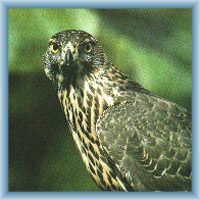Animals
The Sumava fauna had been formed during the period of glaciation and originally it was of almost exclusive woodland character. Most of the woodland spedies have survived except for large predators (including bear, lynx, wolf, wold cat). Sumava water streams in their upper parts are minimally polluted and consequently Sumava belongs to the most important habitats of the river otter in the Czech Republic.
The unique fauna of invertebrates bound to upland peatbogs includes a number a rare glacial relics. It was one of the reasons why Sumava has been listed in the Red Book of IUCN ecosystems.
As a large area, the Sumava NP provides habitats even for larger vertebrates. It is a traditional refuge for forest fowl-type birds. In spite of strong decline over the last several decades, several species of grouse (Tetras urogallus, Lyrurus tetrex) have survived in the Sumava region. Hazel grouse (Tetras rufus) occurs in relatively higher numbers. Of large predators, only lynx is found in the Sumava today. The successful attempt to reintroduce lynx in the 1980s was conditioned by a large area of a forested landscape, by relatively low degree of settlement, and by sufficient breeding grounds (mainly the red deer). Large ungulata, particularly the European stag, abound due to the absence of predators and to game management.
Source: materials of National Park of Šumava

|
| Falcon |
The unique fauna of invertebrates bound to upland peatbogs includes a number a rare glacial relics. It was one of the reasons why Sumava has been listed in the Red Book of IUCN ecosystems.
As a large area, the Sumava NP provides habitats even for larger vertebrates. It is a traditional refuge for forest fowl-type birds. In spite of strong decline over the last several decades, several species of grouse (Tetras urogallus, Lyrurus tetrex) have survived in the Sumava region. Hazel grouse (Tetras rufus) occurs in relatively higher numbers. Of large predators, only lynx is found in the Sumava today. The successful attempt to reintroduce lynx in the 1980s was conditioned by a large area of a forested landscape, by relatively low degree of settlement, and by sufficient breeding grounds (mainly the red deer). Large ungulata, particularly the European stag, abound due to the absence of predators and to game management.
Source: materials of National Park of Šumava
Back Home Šumava mountains
Šumava mountains and Czech Forest - Accommodation by type:
Czech mountains - Catalogues of accommodation:
